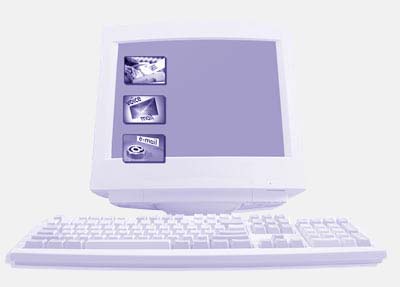Nortel Business Communication Manager
BCM 50 and BCM 200-450
Computer Telephony Integration (CTI)

BCM supports Computer Telephony Integration (CTI), which provides companies with the ability to turn a desktop
computer into a powerful communications tool.
The basis for BCM's CTI capabilities is Local Area Network Computer Telephony Engine (LAN CTE), a proprietary
protocol specific to BCM. LAN CTE is based on client/server architecture. The server component is pre-installed on the BCM and the client is available for download off the BCM for installation onto customer-provided personal computers (PCs) running a supported Windows operating system. (For information about supported Windows operating systems, see "System Requirements" below.) The LAN CTE client on the PC provides application programming interfaces (APIs) that allow an application to communicate with the LAN CTE server on the BCM.Using these interfaces an application can perform a number of activities, such as monitor activity on the BCM (e.g.
the status of lines and sets) or control the activities of a BCM telephone (e.g. place a call on hold or transfer a call from one telephone to another).
Included with the LAN CTE client is additional software that allows applications written to Microsoft's Telephony Application Programming Interface (TAPI) to work with BCM. A large number of applications written to both the LAN CTE and TAPI protocols are available from third party software developers. Examples include attendant consoles, integrations with customer relationship management (CRM) software and packages for specific industry verticals (such as hospitality). For more information on 3rd party packages,contact TRC at 416.398.4448
BCM LAN CTE seats enable the use of LAN CTE (and TAPI) applications on the desktop PC. Customers can purchase software authcodes for LAN CTE seat licenses in increments of 1, 4, 8, 16, and 32 seats. A try-and-buy authcode is also available for customers who wish to try LAN CTE before purchasing.
LAN CTE seat licensing is on a per PC basis. Hence, more than one application can run on a single PC with only a single LAN CTE license. For example if Personal Call Manager (see following section) and a 3rd party application are running on the same PC, only one LAN CTE license is required. In addition, many 3rd party applications only require a single LAN CTE license to support a large number of users of that application. Applications that use "third party call control" consume a single LAN CTE license, but provide service over the LAN to their own clients running on multiple other PCs. Specific information on these applications is available from their developers.
LAN CTE for BCM 50 Release 2 and BCM 4.0 is supported on Windows 2000, Windows XP and Windows Server 2003. In addition, Windows 98 SE is supported for BCM 4.0.
Personal Call Manager (PCM)
Personal Call Manager (PCM) is an award-winning TAPI-based telephony application from Nortel. PCM is provided as a standard feature on BCM, however each installation of PCM requires a LAN CTE seat license. It is supported on the same Windows operating systems as LAN CTE. System requirements for LAN CTE are the same as the host operating system.
Personal Call Manager Features
Users can activate all PCM features with either a keyboard or a mouse. The primary benefit of the PC interface is that
users can manage calls visually and handle them easily with "drag and drop" menus. Common features include:
. Address Book - PCM includes a full featured address book. When used on a BCM with Calling Line ID
(CLID), PCM can "pop" a dialog box to a PC, showing the user the name of the calling party in addition to other associated information that may be stored in the PC database. The Address Book also enables quick dialing through a short series of mouse-clicks.
. Dial - The user can make a call using task tray or Calls menu, the toolbar, the Address Book or the Quick Dial list.
. Answer/Hold/Unhold - PCM notifies the user of an incoming call and the CLID (if the user subscribes to the service). The icon changes as the status of the call changes from active to held.
. Multiple Calls - PCM can control several calls at once, equal to the number of lines available on the BCM telephone. All calls display in the main window, but only one can be active at any given time (with exception of a conference call, when two calls are active at once). When a user answers a second call, the current call is automatically placed on hold.
. Conference - This type of call connects one user and two or more others on a single call. A minimum of two lines are required to appear on the BCM telephone. As with the BCM set, when a user places a 3 party conference call on hold from the PCM, a conference call placed on hold from PCM puts both of the callers on hold, enabling
Personal Call Manager Benefits
Implementing Personal Call Manager (PCM) offers many benefits to both the knowledge worker and the formal or informal contact center agent. PCM increases productivity and enhances customer
service through the following:
. Incoming calls are displayed on the desktop PC, using Caller Line ID that will show the name or number of the calling party (user must subscribe to Call Line ID service).
. Less time on the phone translates into reduced 1-800 charges and more time spent with potential new customers or selling additional products and services to existing customers.
. Managing telephony features through a simple drag and drop PC interface means never again having to say "I'll transfer you but if I lose you here is the number".
|


